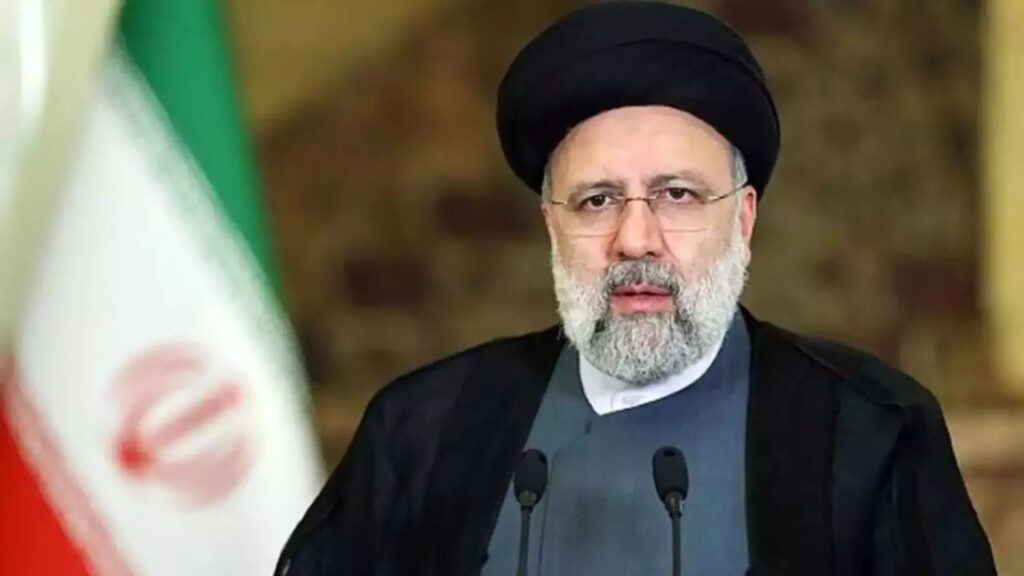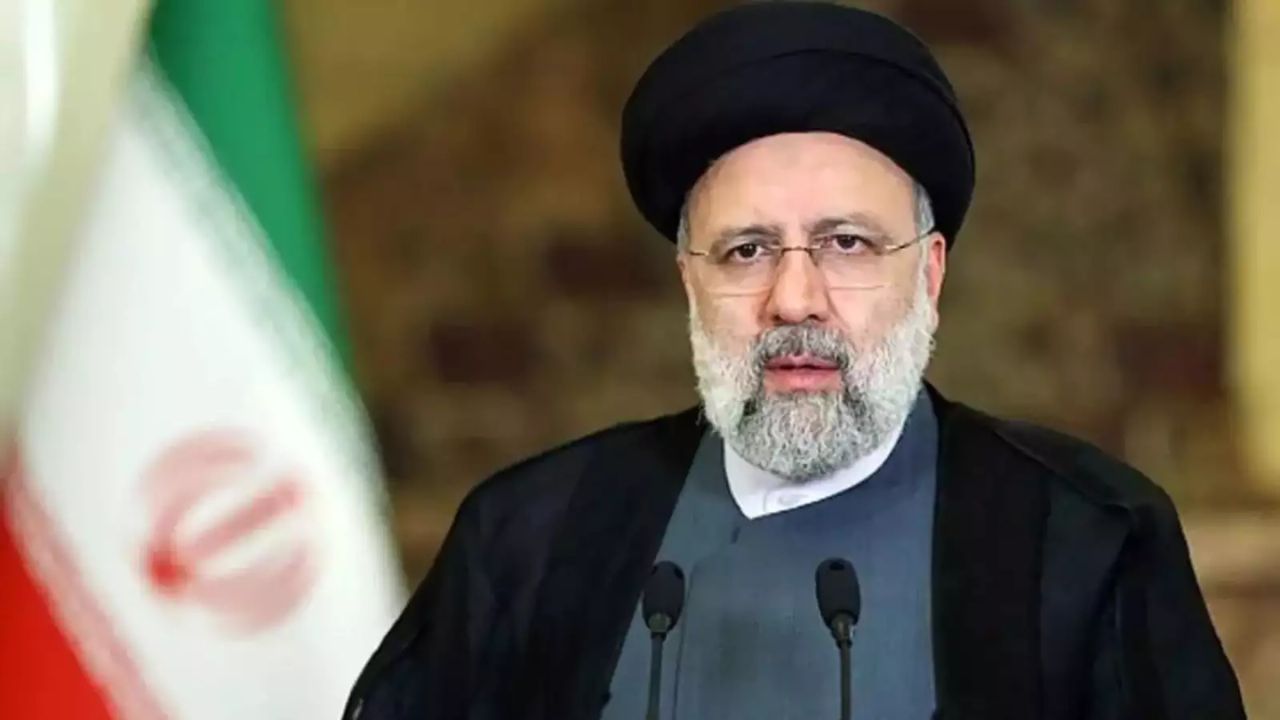Ebrahim Raisi helicopter crash, Iran President helicopter crash, Raisi crash investigation, Iranian leadership, Masoud Pezeshkian, Iran snap elections, climatic conditions, Raisi death impact, Iranian politics
Explore the official investigation into the helicopter crash that claimed the life of former Iranian President Ebrahim Raisi. Discover the complex climatic conditions that led to the tragic event, its impact on Iran’s political landscape, and the rise of Reformist leader Masoud Pezeshkian in the aftermath.

What Caused Ex-Iranian President Raisi’s Helicopter Crash: A Detailed Investigation
The tragic helicopter crash that claimed the life of Iran’s former President Ebrahim Raisi, along with seven other high-ranking officials, has left a profound impact on the nation. As Iran mourns the loss of its leader, an official investigation into the incident has shed light on the circumstances surrounding the crash. The findings, reported by Iranian state television, point to complex climatic and atmospheric conditions as the primary cause of the disaster. This article delves into the details of the investigation, the events leading up to the crash, and its broader implications.
The Helicopter Crash: A Tragic Event
On a seemingly routine mission in May, a helicopter carrying President Ebrahim Raisi, his foreign minister Hossein Amir-Abdollahian, and six other officials met with disaster in a remote mountainous region in northwestern Iran. The crash resulted in the death of all on board, sending shockwaves throughout the country and beyond. The 63-year-old Raisi, a key figure in Iran’s political landscape, was seen as a potential successor to the 85-year-old Supreme Leader Ayatollah Ali Khamenei, making his untimely death particularly significant.
The Investigation: Complex Climatic Conditions
Following the crash, the Supreme Board of the General Staff of the Armed Forces launched a thorough investigation to determine the cause of the tragedy. According to the final report, the primary cause of the crash was attributed to the complex climatic conditions prevalent in the region during spring. The report highlighted that the helicopter encountered a sudden and dense fog, which drastically reduced visibility and led to the aircraft’s collision with a mountain.
The investigation found that the helicopter’s systems and parts were functioning correctly, ruling out any signs of sabotage. The sudden appearance of thick fog was a crucial factor, as it disoriented the pilots and left them with little time to react. The mountainous terrain further compounded the difficulty of navigating under such conditions, ultimately leading to the fatal crash.
The Climatic Challenges of Northwestern Iran
The region where the crash occurred is known for its challenging weather patterns, particularly during the spring season. The combination of mountainous terrain and unpredictable weather can create hazardous flying conditions. The investigation report noted that the region’s climate could change rapidly, with fog, high winds, and sudden temperature drops being common occurrences. These factors contributed to the severity of the situation faced by the helicopter’s crew.
The Victims: A Nation Mourns
The crash not only claimed the life of President Raisi but also took the lives of several other important figures in Iran’s government. Foreign Minister Hossein Amir-Abdollahian, who was known for his diplomatic efforts and strategic influence in Iran’s foreign policy, was among those who perished. The loss of such high-ranking officials has left a void in Iran’s political and administrative framework.
Ebrahim Raisi’s death was particularly poignant, given his prominent role in the country’s succession planning. As a conservative politician with close ties to the Supreme Leader, Raisi was expected to play a significant role in Iran’s future leadership. His death has disrupted the political landscape, leading to unexpected shifts in the nation’s governance.
The Aftermath: Snap Elections and a New President
In the wake of President Raisi’s death, Iran was plunged into a period of political uncertainty. The country held snap elections to fill the leadership vacuum, with the Reformist candidate Masoud Pezeshkian emerging as the winner. Pezeshkian’s victory marked a significant shift in Iran’s political direction, as the nation transitioned from a conservative administration under Raisi to a more reform-oriented leadership.
The snap elections were conducted under intense scrutiny, as the nation grappled with the loss of its leader and the implications for its future. Pezeshkian’s win was seen as a reflection of the public’s desire for change and a move away from the hardline policies that had characterized Raisi’s tenure.
The Impact on Iran’s Political Landscape
The helicopter crash and the subsequent death of President Raisi have had far-reaching consequences for Iran’s political landscape. Raisi’s death removed a key figure in the conservative faction, creating an opportunity for Reformists to gain influence. The election of Masoud Pezeshkian as president indicates a shift in public sentiment towards more moderate and progressive policies.
Pezeshkian, known for his focus on social reforms and economic development, has the challenging task of steering the country through a period of transition. His administration will need to address the immediate concerns of the nation, including stabilizing the political environment, managing relations with the international community, and navigating the economic challenges that Iran faces.
The Broader Implications for Iran
The death of Ebrahim Raisi and the outcome of the snap elections have broader implications for Iran’s future, both domestically and internationally. Domestically, the change in leadership may lead to a reevaluation of key policies, particularly those related to social issues, economic reforms, and governance. The new administration’s approach to these challenges will be closely watched by both supporters and critics.
On the international front, Iran’s foreign policy could see adjustments under Pezeshkian’s leadership. While the late Foreign Minister Hossein Amir-Abdollahian had established a strong diplomatic presence, his successor will need to navigate complex geopolitical dynamics, including relations with the West, regional alliances, and the ongoing tensions in the Middle East.
Conclusion: A Tragic Loss and a New Chapter for Iran
The helicopter crash that claimed the life of former Iranian President Ebrahim Raisi was a tragic event that shook the nation. The investigation into the incident revealed that complex climatic conditions were the primary cause of the crash, with no evidence of sabotage. The loss of Raisi and other high-ranking officials has left a significant impact on Iran’s political landscape, leading to a shift in leadership and the election of a Reformist president.
As Iran moves forward, the new administration under President Masoud Pezeshkian faces the daunting task of guiding the country through a period of change and uncertainty. The legacy of Ebrahim Raisi, along with the lessons learned from this tragic incident, will continue to influence Iran’s future trajectory.
The incident serves as a reminder of the unpredictable and often harsh conditions that can affect even the most routine of missions. It also underscores the importance of robust safety measures and the need for ongoing vigilance in ensuring the security of those in positions of leadership. As the nation mourns its loss, it also looks ahead to a new chapter in its history, one that will be shaped by the events of this tragic day and the leadership that follows.
Read More
- Colorado Dog Breeder Found Dead, Puppies Missing, Suspect Arrested (Copy)
- Rapper Fatman Scoop Passes Away After On-Stage Medical Emergency
- Dick’s Sporting Goods Reveals Cyberattack Investigates Potential Data Breach
- Yelp Sues Google for Anti Competitive Practices A Legal Battle Over Local Search Dominance
